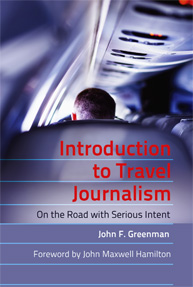Real culture
Posted: January 22, 2013 | Contents: Chapter 4 | Tags: local foreign culture, matador network, matadornetwork.com, sarah menkedick, travel journalism, travel journalist, travel writer, travel writing Leave a comment »Chapter 4 suggests several criteria to guide the travel journalist in bridging cultural divides. Sarah Menkedick of the Matador Network encourages the travel journalist to consider modern aspects of foreign culture as authentic. In her article Menkedick compares traditional Chinese culture symbolized by dumpling restaurants versus modern culture represented by adolescence pulling all nighters in the local McDonalds. In Menkedick’s view both equally represents the local culture. Here’s an excerpt:
This idea of authenticity often reinforces the same set of power relations travelers hope to undo: the control of dominant, technologically advanced, “modern” countries over more “primitive”, poor countries. Why is it that “modern” countries are free to change, but other cultures and societies are supposed to exist in a permanent pre-modern condition? Why is it that “modern” countries are free to change, to grow wealthy, to develop, but other cultures and societies are supposed to exist in a permanent pre-modern condition, living in ignorant bliss uncontaminated by the influence of the outside world? Are people only authentic when they’re poor? When they don´t have access to the opportunities and choices that (significantly wealthier) travelers do?How can we think about authenticity in a way that is not synonymous with poverty and unwavering obedience to tradition? These are questions travelers need to ask in order to work for healthy, sustainable growth in the places they visit, and to escape this dichotomy of authentic, static, noble poverty vs. inauthentic wealth, growth, and change.
